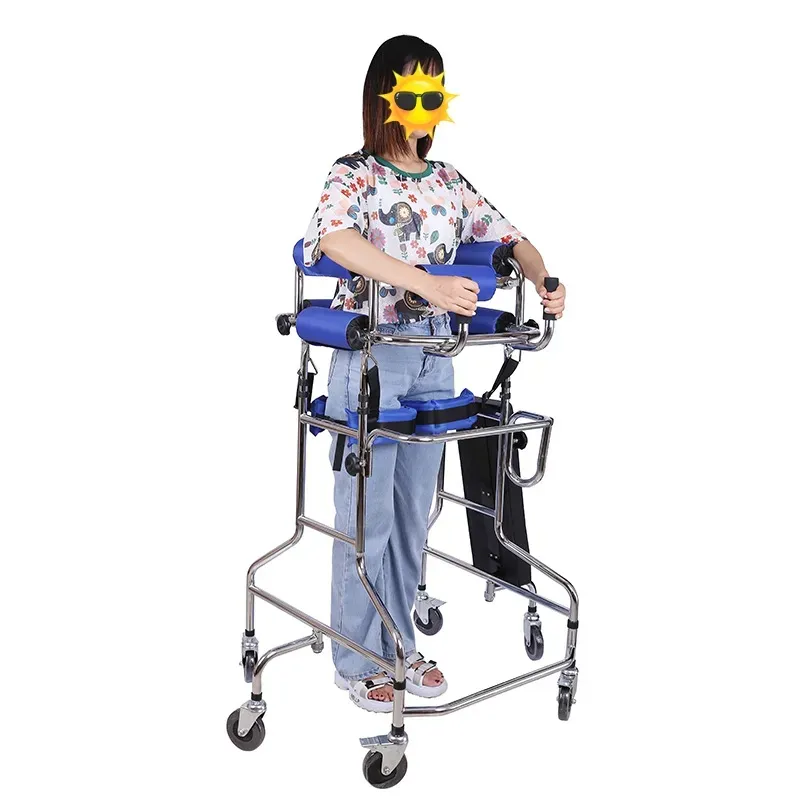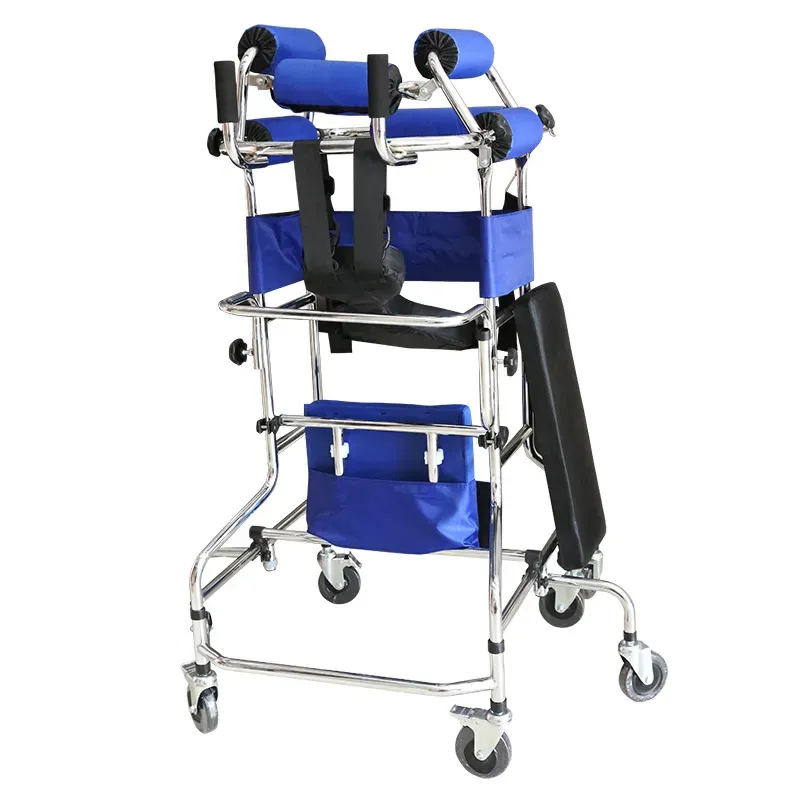Walking Assistance Equipment – Safe, Adjustable, Lightweight
An Insider’s Take on Modern Mobility: The Foldable Upright Walker ZF-WA118
If you’re researching walking assistance equipment for rehab, daily mobility, or school-based therapy, you’ve probably noticed the market got smarter—and more specialized. I’ve spent enough time with clinicians and buyers to spot what actually matters beyond the brochure: adjustability, stability under real-world loads, and parts that don’t corrode after a rainy month.

Spotlight: ZF-WA118 Rollator Walker (Children & Adult)
Originating from Zhouhu Village, Jizhou Zone, Hengshui City, Hebei Province, China, the ZF-WA118 is a foldable upright walker designed for users ≈120–150 cm (about 47.2–59 in) and up to 120 kg (≈265 lb). The frame uses high-carbon steel with electroplating, paired with ABS components and a solid nylon seat cushion. There are Type A and Type B variants (girls/boys styling cues), which some pediatric therapists actually find helpful for user acceptance. Eight 360° swivel casters—with locking—make tight turns in corridors far less dramatic than with older walkers.
| Spec | Details (≈ values; real-world use may vary) |
|---|---|
| Product Name | Rollator Walkers Rollator Walker For Children & Adult, Foldable Upright Walker ZF-WA118 |
| Materials | Carbon steel (electroplated) + ABS + nylon seat cushion |
| User Height Range | ≈120–150 cm (47.2–59 in), adjustable height and width |
| Max Load | Up to 120 kg (≈265 lb) |
| Mobility Features | 8x 360° swivel casters with locks, anti-rollover geometry, handrail, foot lever |
| Package | 1 walker, 12 seat cushion (as specified; packaging may vary) |
Process, Testing, and Service Life
- Materials & fabrication: high-carbon steel tubing (≈1.2–1.5 mm wall), CNC cutting, TIG/MIG welding, electroplating, ABS/nylon molding.
- Assembly & QC: torque-controlled fasteners, caster alignment, brake/lock verification, seat stitching inspection.
- Testing (per ISO 11199-2 style methods): static load at 1.5× rated (≈180 kg) for 5 min; cyclic fatigue ≈100,000 cycles; caster endurance ≈20 km; corrosion ASTM B117 salt spray ≈48–72 h with no red rust on functional surfaces.
- Certifications/standards: designed to align with ISO 11199-2 rollator requirements; materials assessed to ISO 10993 contact categories; CE MDR framework and FDA Class I (walker) considerations apply regionally.
- Service life: ≈3–5 years under normal clinical/home use; consumables (grips, casters) may need replacement sooner depending on terrain and cleaning routines.

Where It Fits (and Where It Shines)
Use cases: pediatric rehab clinics, school therapy rooms, hospital corridors, and—surprisingly—tight apartments where pivoting is everything. Many customers say the lockable swivel casters reduce “fighting the walker.” For caregivers, the foot lever helps ease curb maneuvers.
Case snapshot: a rehab center piloted 10 units for mixed-height teens and smaller adults; staff noted quicker setup (≈30% less fiddling with adjustments) and reported fewer minor slip incidents (≈20–25%) over eight weeks, compared with their older frames. Not a clinical trial, but the mood in the therapy room changed—less frustration, more walking minutes.
Vendor Landscape (quick compare)
| Vendor | Certs/Standards | Lead Time | Customization | Price Band |
|---|---|---|---|---|
| Zhaofa Medical (Hebei) | ISO-aligned; CE MDR-ready docs; FDA Class I context | ≈15–30 days | Colors, branding, seat width, caster hardness | Value-tier |
| Global Brand A | Broad global approvals | ≈30–60 days | Limited | Premium |
| Local Importer B | Varies by batch | Stock-dependent | Minimal | Budget |
Customization and Practical Tips
- Cosmetics: color accents for Type A/B; private-label printing for clinics.
- Ergonomics: handle foam density options; seat width tweaks within tooling limits.
- Mobility tuning: caster material (indoor vs mixed-terrain), lock strength, and foot-lever geometry.
- Care: wipe electroplated parts with neutral cleaner; recheck fasteners monthly; replace worn casters for silence and safety.

Final thought: as walking assistance equipment gets more specialized, the sweet spot is still the basics—stability, adjustability, and parts that survive busy corridors. The ZF-WA118 checks those boxes, and to be honest, it’s the swivel-lock combo that wins daily life.
Authoritative Sources
- ISO 11199-2:2014, Walking aids manipulated by both arms—Requirements and test methods—Part 2: Rollators.
- Regulation (EU) 2017/745 on medical devices (MDR), CE marking framework.
- FDA, 21 CFR 890.0010, Mechanical walkers, Class I (general controls; many are 510(k)-exempt).
- ISO 10993 series, Biological evaluation of medical devices (relevant to patient-contact materials).
- ASTM B117, Standard Practice for Operating Salt Spray (Fog) Apparatus (corrosion evaluation).




































